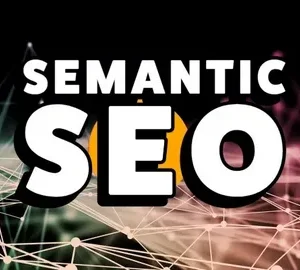In today’s digital-first world, simply having a website isn’t enough. Potential customers don’t wait for you to come to them—they search, compare, and decide online. That’s where digital marketing steps in—and when combined with semantic SEO, it becomes a powerful lever for growth.
Semantic SEO goes beyond keywords—it focuses on context, relevance, meaning, and user intent. It’s about answering real questions, organizing content topically, and ensuring depth and clarity. Through advanced digital marketing services, businesses can deliver tailored strategies in SEO, PPC, social media, and content—all built on semantic foundations.
Let’s dive into what semantic SEO means in practice, how to integrate it across marketing channels, and why it matters for businesses looking to grow sustainably in the UK and beyond.

What Is Semantic SEO and Why It Matters
Traditional SEO fixates on keywords and rankings. Semantic SEO, however, focuses on topics, entities, and user intent—ensuring search engines understand not just phrases, but meaning.
-
It emphasizes related terms, synonyms, and concept clusters, so content appears in diverse intent-driven searches.
-
It aligns with user questions, providing immediate, relevant answers.
-
It helps build topical authority, increasing trust with both users and search engines.
Why it works:
-
Better reach: You capture a wide range of queries and ranking opportunities.
-
User satisfaction: Visitors stay longer and take action when they find depth, clarity, and relevance.
-
Sustainable results: Rather than chasing volatile rankings, semantic SEO lays a foundation for long-term visibility.

Crafting a Semantic SEO Foundation
A robust semantic SEO strategy starts with research and structure:
A. Topic Clusters & Pillar Pages
Develop primary pillar content (e.g., “Digital Marketing Strategies”) and cluster related subtopics (e.g., SEO, PPC, Email Marketing, Content Strategy).
-
Each subtopic links back to the pillar, boosting topical relevance and user navigation.
B. Keyword and Entity Research
Use search insights to identify:
-
Long-tail keywords (e.g., “how to optimise on‑page SEO for local businesses”).
-
Related concepts like “site architecture,” “user engagement,” or “mobile‑first design.”
C. Content Mapping
Create content that answers:
-
Who: “Who benefits from digital marketing services?”
-
What: “What are semantic SEO tactics in PPC ads?”
-
How: “How to integrate email automation with content marketing?”
D. Structured Data & Metadata
Use schema markup, clear headings, and FAQs—making content machine-readable and user-friendly.
Digital marketing strategies should frame services in clearly defined sections—ideal for a pillar-cluster structure that enhances navigation and internal linking.

Applying Semantic SEO Across Digital Channels
A. SEO & On‑Page Optimization
-
On‑Page: Use headings, synonyms, and latent semantic terms.
-
Technical SEO: Fast load times, mobile responsiveness—every ingredient of technical hygiene supports semantic clarity.
-
Local SEO: Optimize business listings, citation signals, and content around “near me” and location-specific intents.
B. PPC Advertising
-
Use semantically related keywords in ad groups: not just “digital marketing,” but “small business digital marketing UK,” “local SEO services near me.”
-
Ad copy should reflect user intent (solve, guide, local relevance), aligning with landing page topics.
C. Content Marketing Strategy
Create diverse content formats—blogs, infographics, videos, ebooks—all connected through semantic themes.
-
Example: a blog “Top Digital Marketing Tactics for 2025” links to deeper posts like “SEO Strategies for Local UK Restaurants” or “Integrating Email and Content for E‑commerce.”
-
Semantics help cross-link topics like “conversion rate optimization,” “lead magnets,” “UX in marketing.”
D. Email Marketing
Segment emails based on interest and intent:
- Welcome drip: “Here’s what semantic SEO means and how we help you get found.”
- Nurture series: Detailed insights on individual services (SEO, PPC, local optimization), using targeted keywords and links to semantically related content.
- Trigger emails: Abandoned cart, content center access—each with relevant related content (e.g., “Check out our blog on the most effective PPC strategies”).
E. Social Media & Community Engagement
Use semantic messaging:
- Post “Did you know? Local SEO can double your foot traffic.”
- Partner with local voices—highlight “Digital marketing for Nottingham cafes”—integrating local context.
- Share short videos answering FAQs—like “What is semantic SEO?”
F. Telemarketing Integration
While telemarketing seems offline, integrating a semantic strategy can make it more effective:
- Call scripts built around user intent—e.g., “Are you looking to improve your Google rankings or optimize ad campaigns?”
- Follow‑up emails link to relevant semantic content based on the conversation.
A well-rounded digital marketing approach benefits from connecting telemarketing with targeted, semantically relevant online content.
Structuring Your Digital Strategy with Semantic SEO
Here’s how to build a full-semantic strategy:
A. Business Discovery & Research
-
Understand your audience and goals (awareness vs. lead generation).
-
Research competitor content clusters and entity relationships.
B. Strategy Development
Map out pillar and cluster pages:
-
Pillar: “Digital Marketing Strategy”
-
Clusters: SEO, PPC, Content, Email, Social, Local SEO, Web Design, Telemarketing
Tailor content for local relevance if needed: e.g., “Digital Marketing in Manchester” or “SEO for Nottingham businesses” with hyperlocal keywords and cultural context.
C. Content Creation & Publishing
-
Write long-form pillar content (~1,500–2,000 words) with semantically rich language and structured sub-sections.
-
Each cluster article (500–800 words) dives deeper—optimizing for related terms and linking back to the pillar.
D. Promotion & Engagement
-
Promote via social channels, email newsletters, paid ads, and telemarketing follow-ups.
-
Engage local influencers or community pages (especially for localized content).
E. Monitoring & Refinement
-
Track performance: Google Analytics, Search Console, rankings, conversions.
-
Adjust content clusters based on query data and user behavior.
-
Expand semantic scope by adding new related topics (“voice search optimization,” “AI personalization”).
Real‑World Examples & Benefits
Small Café in Nottingham
-
Semantic Content: “Best cafés in Nottingham,” “local breakfast spots,” “Nottingham café SEO tips.”
-
Pillar: “Digital marketing for cafés” → cluster: “Local SEO for cafes,” “Social ads for cafes,” “Email offers for regulars.”
-
Benefit: 2× weekday foot traffic, 30% revenue lift in months.
Boutique in Hockley
-
Focus on local flair and trending design content.
-
Clusters include “Nottingham fashion SEO,” “Instagram reel strategies,” “Local SEO for boutiques.”
-
Result: Top‑3 rankings + 5× Instagram reach.
Law Firm in the UK
-
Pillar: “Law firm digital marketing guide”—clusters: “Local SEO for law firms,” “PPC for legal services,” “Website UX for lawyers.”
-
Outcome: 300% traffic increase, 30% more organic leads, 50% higher engagement.
Common Pitfalls & How to Avoid Them
-
Focusing Only on Keywords
Fix: Build rich, topic-based content with context, not just keywords. -
Ignoring Structure
Fix: Use proper headings, internal linking, and topic maps for clarity. -
Neglecting User Intent
Fix: Write for questions and solutions—real value > keyword stuffing. -
Skipping Local/Technical SEO
Fix: Optimize site performance, mobile usability, and local presence. -
Lack of Integration Across Channels
Fix: Align semantic content with PPC, email, social, and telemarketing outreach.
Conclusion & Next Steps
Semantic SEO changes the game. It shifts the focus from isolated keywords to meaningful, connected topics and from vanity metrics to ROI-driven results.
A semantic SEO-infused digital marketing ecosystem can include SEO, PPC, content marketing, social media, email, web design, and even telemarketing—all orchestrated as a holistic, results-driven strategy.
Ready to grow?
- Start with a pillar content audit or discovery call.
- Map your topics and plan cluster content.
- Integrate semantic strategy across channels.
- Monitor results and refine continually.
By investing in semantic content, you’re building authority, trust, and sustainable visibility—for today and tomorrow.




